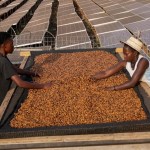Fuel Shortages and Military Losses Expose Deepening Crisis in Russia
(MOSCOW) — Russia is facing severe fuel shortages across several regions, forcing rationing, station closures and growing public frustration, according to reports circulating inside the country including from Russian state linked commentators who rarely speak openly about domestic problems.
In Crimea, the Russian installed governor announced that purchases at petrol stations are now restricted to 30 litres per person. He urged residents to “remain patient” and insisted the situation was “under control”, despite admitting that the crisis could not be resolved quickly. Similar disruptions are being reported in the Nizhny Novgorod region, where privately owned filling stations ,which make up around 67 percent of the market have begun shutting down altogether after struggling to secure fuel supplies.
Residents in affected areas say only priority services such as ambulances and police vehicles can still refuel at select sites, while ordinary motorists are resorting to siphoning petrol from parked cars for personal use or resale on the black market.
The shortage is believed to be linked to Ukraine’s continued strikes on Russian oil infrastructure, including refineries and pumping stations. A Russian propagandist, Maxim Kishnikov, conceded in a recent online broadcast that around 17 percent of refining capacity had been disrupted. He warned that ration cards for fuel were now being openly discussed inside Russia and that the country was at risk of an “economic collapse in its own rear”.
Military Infrastructure Under Pressure
Ukraine has intensified its use of long range drones and modified Neptune missiles to strike fuel depots, transport hubs and power stations inside Russian territory and occupied Crimea. Satellite imagery released this week shows multiple aircraft including a BE-12 patrol plane, an AN-26 transport aircraft and an Mi-8 helicopter destroyed at airfields in Crimea.
Ukraine also claims to have shot down a Russian helicopter using a first person view (FPV) drone costing around 500 US dollars (approximately 50,000 roubles at current conversion). The aircraft reportedly valued at 10 million US dollars (about 1 billion roubles) is the third such loss recorded in this way.
Meanwhile, Ukrainian forces continue to disable Russian armoured convoys and support vehicles across occupied territory. Russia’s own Ministry of Defence figures, cited by Ukrainian officials, suggest more than 63,000 military vehicles and fuel trucks have been lost during the past two years.
In some frontline areas, Russian soldiers are now travelling by motorcycle due to a lack of armoured transport. Russian state broadcaster RT recently reported that cavalry units including horse drawn logistics teams may be redeployed to compensate. Ukrainian observers have mocked the proposal, saying horses would be even more vulnerable than motorbikes to drone and artillery attacks.
Rising Public Discontent
Despite strict laws banning anti-war demonstrations, several hundred people queued outside the Kremlin over the weekend to file written complaints about environmental damage, housing demolitions and poor public services. Activists say the gathering was the largest civic action in Moscow this year, although none of the written protests directly mentioned the invasion of Ukraine.
Separately, the Rostov region which produces nearly 10 percent of Russia’s wheat has declared an agricultural emergency after late frosts and drought damaged crops. Farmers are now eligible to request federal assistance, though officials warn that harvest forecasts are unlikely to be met.
External Pressure Mounts
European leaders are watching developments closely. Ukrainian officials say Russian drones have violated the airspace of at least eight NATO and EU countries in recent weeks. Some of the alleged incursions are believed to have originated from “shadow fleet” oil tankers operating in the Baltic Sea. Ukraine’s president has called for Russian vessels to be barred from the region, though such a move has not been publicly backed by NATO.
As for the war effort, Russia’s dictator Vladimir Putin has ordered the conscription of 135,000 new recruits by the end of December. Conscripts are not officially permitted for combat deployment in Ukraine, but rights groups say many are pressured into signing contracts in exchange for higher pay then transferred to the front.
Ukrainian officials argue that continued strikes on energy facilities, fuel supply points and military logistics will force Russia into further retreat. One senior adviser said a “strictly symmetrical response” to Russia’s attacks on Ukrainian infrastructure would accelerate an end to the war, adding: “The price for Russia will be high.”

















































